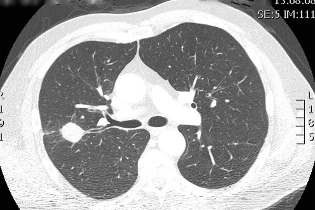What Is a Lung Nodule?
Introduction
Lung nodules are small, round growths that form within the lungs. Often discovered incidentally during imaging scans for unrelated reasons, lung nodules can understandably be a cause for concern. However, not all lung nodules are harmful. In this blog, we’ll explore what lung nodules are, the possible causes, diagnosis methods, and what to expect if you’re diagnosed with one.
What Are Lung Nodules?
A lung nodule is a small mass of tissue located in the lungs. These nodules are typically less than 3 centimeters (about 1.2 inches) in diameter. If a mass exceeds this size, it may be referred to as a lung mass, which is more likely to be cancerous. Most nodules are benign (non-cancerous), but in some cases, they can indicate early-stage lung cancer.
Lung nodules are classified by size and appearance:
- Small nodules are less than 1 centimeter in diameter.
- Medium nodules measure between 1 and 3 centimeters.
- Solid nodules have a uniform, dense appearance.
- Ground-glass nodules have a hazy, less defined structure.
- Part solid and part ground glass nodules have a hazy margin with a solid dense component at the centre of the nodule.
What Causes Lung Nodules?
Several conditions can cause lung nodules, most of which are benign. Common causes include:
- Infections: Fungal infections, such as histoplasmosis, or bacterial infections like tuberculosis, can lead to the development of nodules.
- Inflammation: Conditions like sarcoidosis or rheumatoid arthritis may result in inflammation that manifests as nodules in the lungs.
- Benign Tumors: Hamartomas, a type of non-cancerous tumor, are among the most common benign lung nodules.
- Malignant Nodules: While most nodules are harmless, some can be cancerous or become cancerous over time, which is why further evaluation is essential.
How Are Lung Nodules Diagnosed?
Lung nodules are usually discovered during imaging tests such as:
- Chest X-rays: These can reveal the presence of nodules but may not provide enough detail to determine their nature.
- CT Scans (Computed Tomography): CT scans are more detailed than X-rays and can help distinguish between benign and potentially cancerous nodules based on their shape, size, and density.
Once a nodule is detected, your healthcare provider may recommend:
- Watchful Waiting: If the nodule is small and has benign characteristics, your doctor may recommend periodic scans to monitor its size and appearance.
- Biopsy: A biopsy may be performed if the nodule has suspicious features or is growing. This procedure involves taking a small sample of the tissue for examination under a microscope.
- PET Scans (Positron Emission Tomography): These are used in some cases to assess metabolic activity within the nodule, helping to determine whether it’s cancerous.

